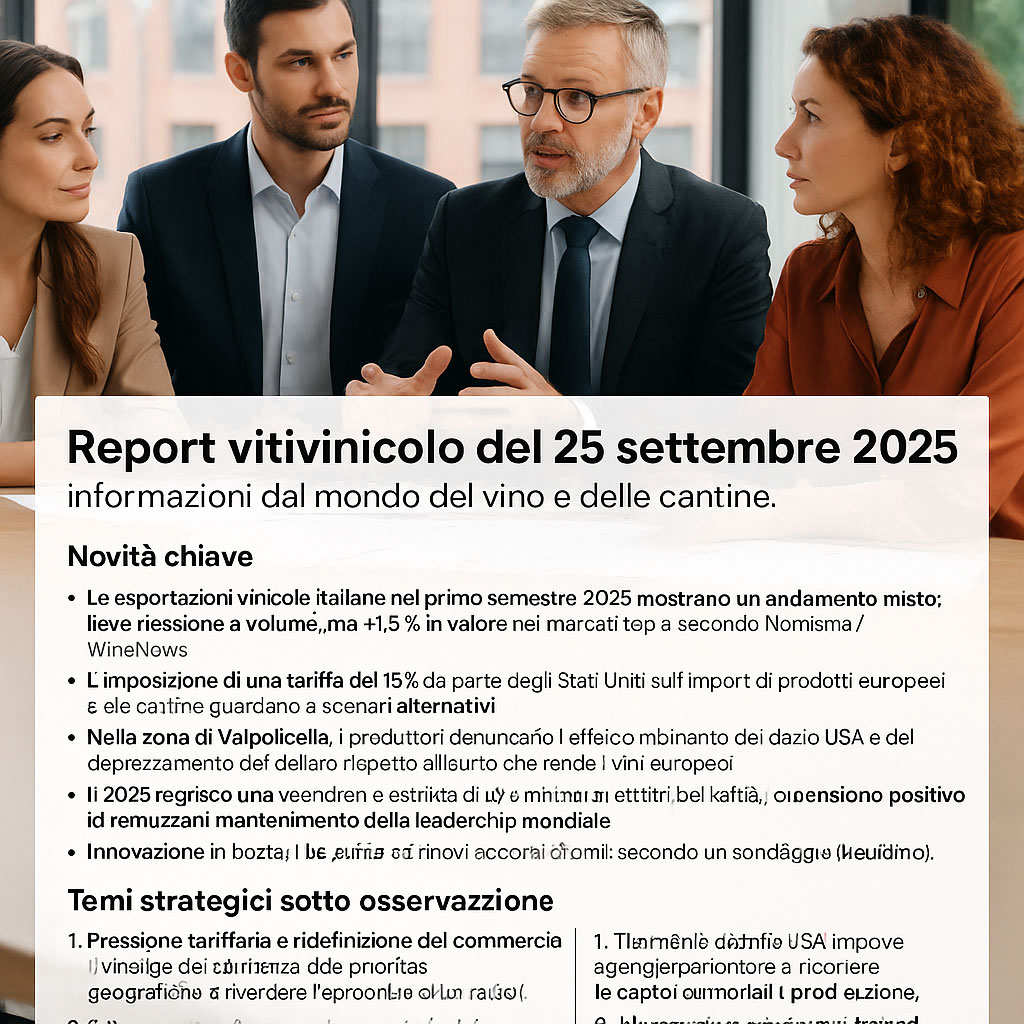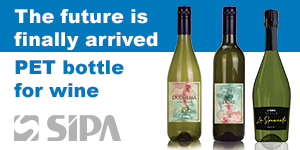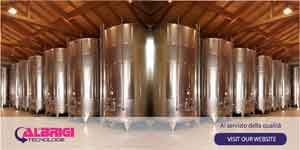information from the world of wine and wineries.
Key news
- Italian wine exports in the first half of 2025 show a mixed trend: a slight decline in volume, but a 1.5% decline in value in the top markets according to Nomisma / WineNews.
- The imposition of a 15% tariff by the United States on imports of EU products is hitting the European wine sector hard, and wineries are looking at alternative scenarios.
- In the Valpolicella area, producers denounce the combined effect of US tariffs and the depreciation of the dollar against the euro, which is making European wines less competitive on the American market.
- Italy expects a 2025 harvest of 47.4 million hectoliters , with healthy grapes and the potential to maintain its world leadership in wine production.
- Italian wine companies are showing “cautious optimism”: according to a Mediobanca survey, a 1.7% increase in revenues and 2% in exports are expected for 2025, with particularly positive performances expected for sparkling wines (4.4% revenues, 6.1% exports).
- On the regulatory front, the EU is focusing on new trade agreements: the draft Mercosur-EU agreement, if approved, could increase agri-food exports to those countries by up to 50%.
- Innovation in the making: The study “Artificial Intelligence for Sustainable Wine Industry” highlights the growing presence of AI in sustainable vineyard management, winery operations, and wine tourism (monitoring, process optimization, and customer experience).
Strategic issues under observation
- Tariff pressure and the redefinition of transatlantic trade. The constraints of US tariffs are forcing wineries to reassess their geographical export priorities. A Plan B is needed, with penetration into Asia, South America, and Africa, to mitigate dependence on the US market.
- Margins under stress and competitive pressure. With rising costs (raw materials, logistics, duties) and price competition, focusing on unit value (premium, niche) becomes even more crucial. You can’t compete on volume alone.
- Aligning exports with real demand . Shipping isn’t enough: wines need to arrive on revolving shelves. The risk is accumulating stock in foreign markets or trade delays that erode margins and brand equity.
- Historical valorization & brand identity The recognition of historic brands like Tasca d’Almerita strengthens heritage narratives: storytelling, authenticity, and premium positioning are levers that can sustain the competitive advantage.
- Enabling Technologies & Sustainability Integrating AI into vineyards and wineries can reduce waste, optimize resources, and anticipate phytosanitary risks—essential elements in a context of growing margins and volatility.





